Chesapeake Bay Retrievers, also known as Chessies, are relatively rare dogs as the breed population is fairly small. That said, they have made a name for themselves as the state dog of Maryland, which is where the breed was developed.
When it comes to color, Chesapeake Bay Retrievers are bred to blend into their surroundings. Their coats can be varying shades of brown, deadgrass, sedge, and tan. Coat colors in Chessies range from light golden shades to deep chestnut hues.
In this article, we’ll discuss the eight Chesapeake Bay Retriever coat colors from rarest to most common.
What Does the Breed Standard Say About Chesapeake Bay Retriever Colors?
Chesapeake Bay Retrievers have three primary colors: brown, deadgrass, and sedge. The American Kennel Club (AKC) breed standard also accepts tan coats. Chessies’ eyes are always either amber or yellow.
According to the AKC, Chessies should be bred to camouflage into their environment while hunting. This is why their fur can be a range of brown tones frequently seen in nature.
It’s also seen as ideal for the dogs to be self-colored, or solid-colored. However, small white spots on the chest, stomach, toes, or backs of the paws are allowed. So are coats with various shades throughout, so long as the coat colors are accepted by breed standards.
Disqualifications from AKC shows include black fur and white spots outside of the chest, stomach, and paws.
#1: Dark Deadgrass
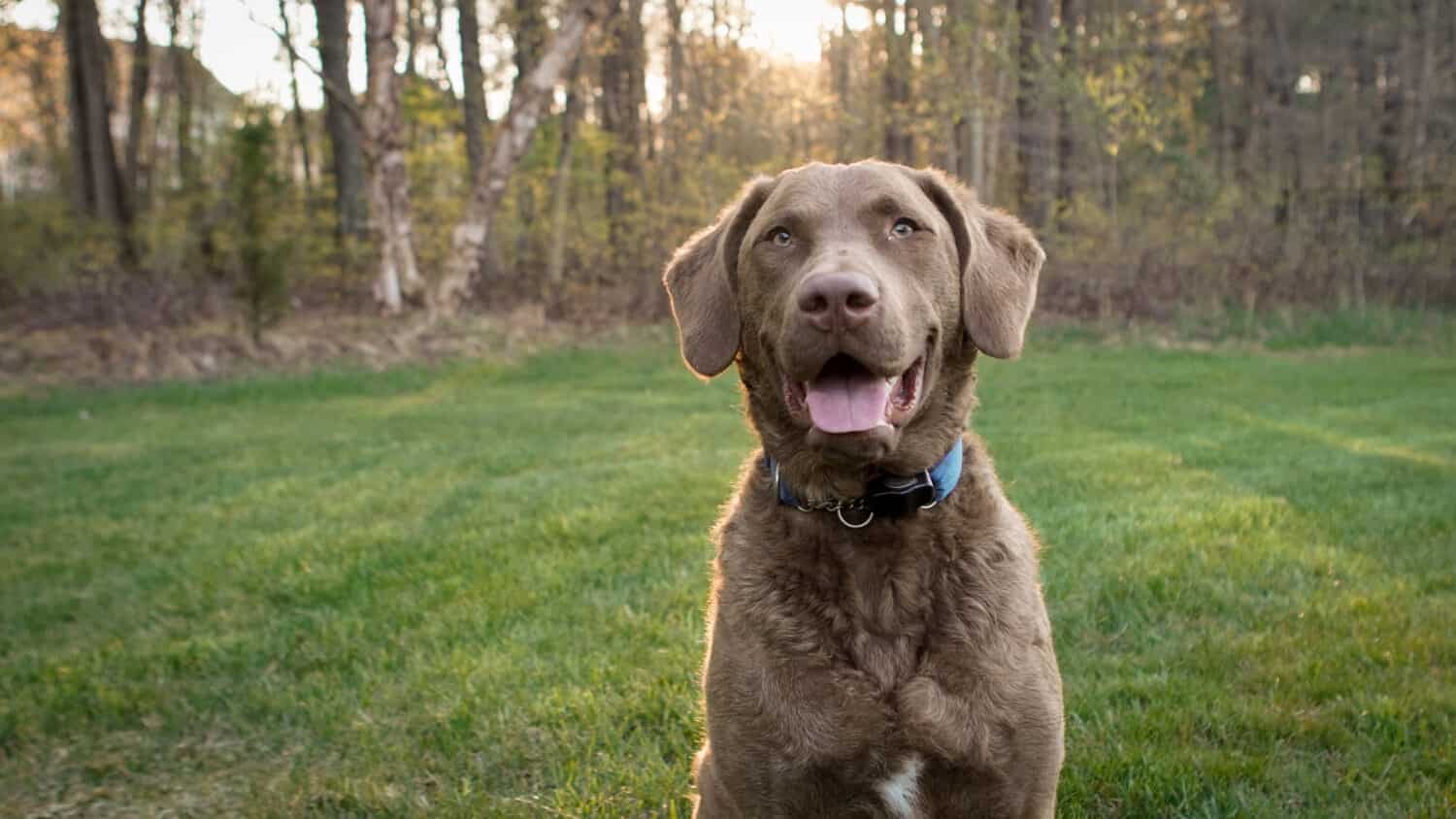
Also known as “ash,” dark deadgrass dogs have gray-brown fur.
©Progressive Ground/Shutterstock.com
Dark deadgrass is considered a less desirable shade in Chessies, so breeders typically won’t breed for it on purpose. These coats are an ashy gray color.
#2: Tan
Despite being an AKC-approved coat color, most sources don’t cover the tan color in the breed as it doesn’t fall into the three main color categories.
Tan Chessie coats are a light, dull brown color, very similar to deadgrass.
#3: Deadgrass
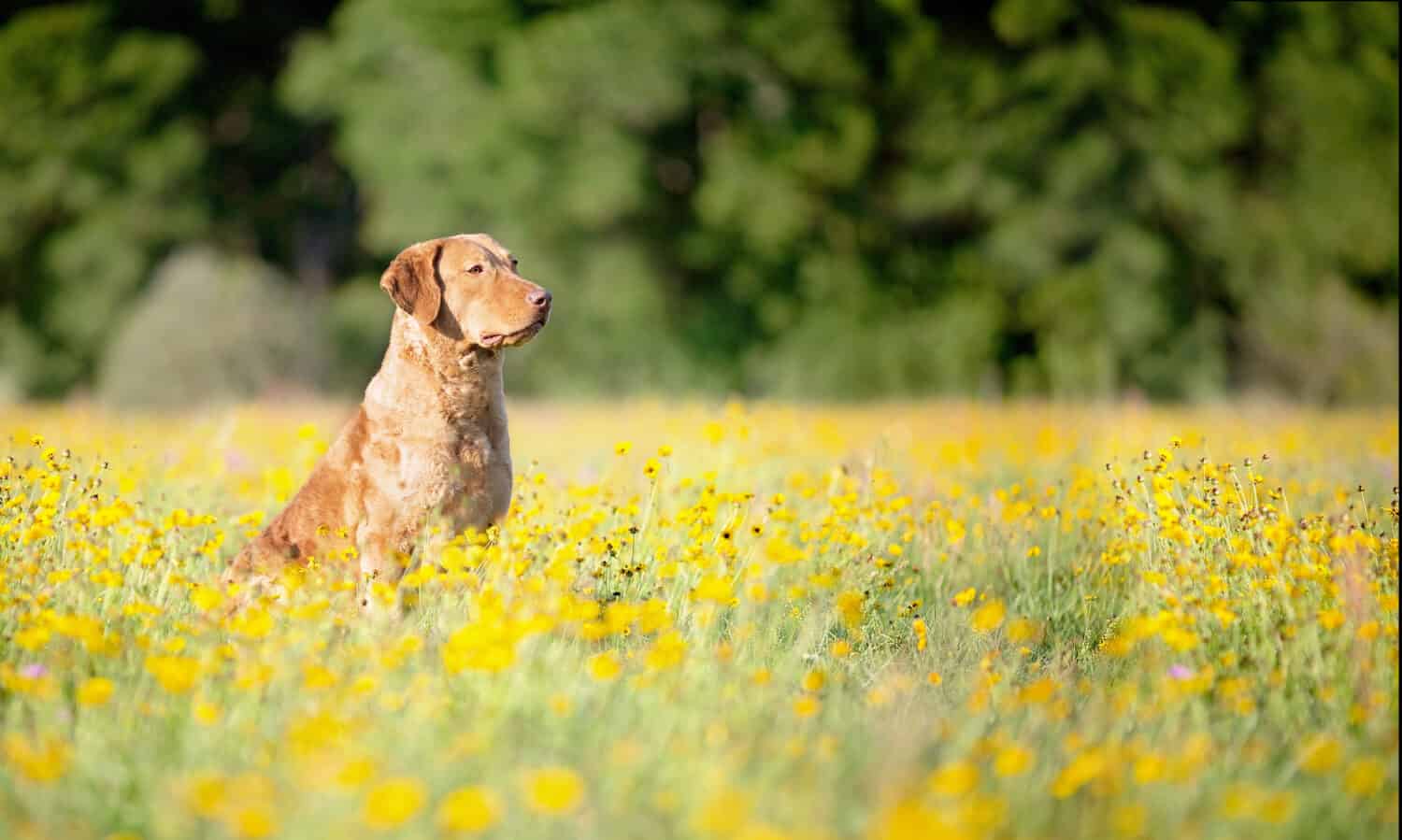
Chessies with deadgrass coats easily blend into wheat fields and similar environments.
©Kerrie T/Shutterstock.com
Deadgrass, also sometimes called “medium deadgrass” to separate it from the darker and lighter hues, is a warm, golden brown.
It’s similar to the coat color that most people associate with Golden Retrievers.
#4: Light Deadgrass
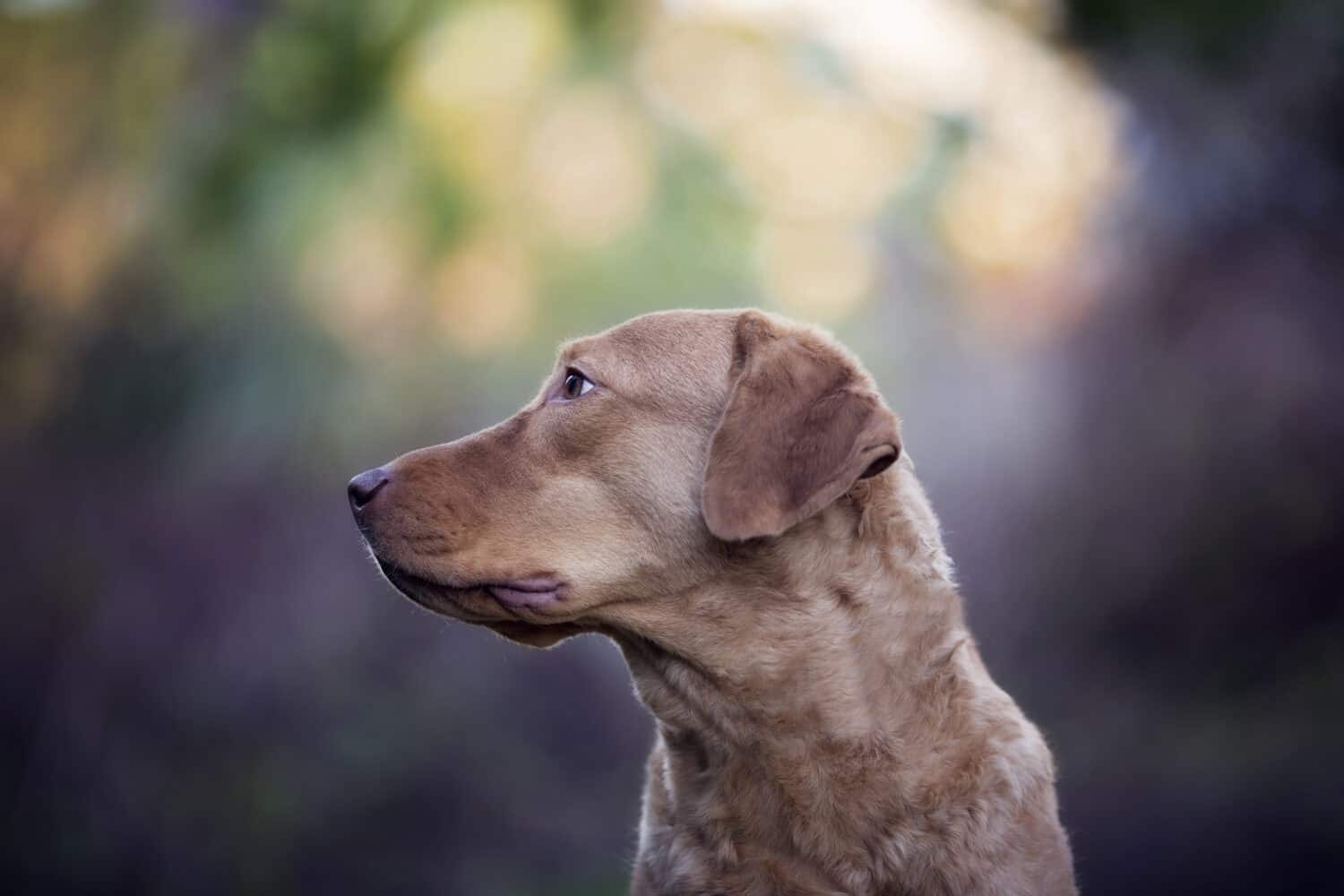
Light deadgrass Chessies look a lot like yellow Labs, but with different face shapes and rippled fur on their backs.
©Kerrie T/Shutterstock.com
These coats closely resemble the coats of yellow Labrador Retrievers. Light deadgrass is a light golden shade that ranges in shade and is sometimes almost white in appearance.
#5: Light Brown

Cool-toned brown coats are called light brown, while warmer hues are classified as deadgrass or sedge.
©Kerrie T/Shutterstock.com
Light brown Chesapeake Bay Retriever coats are a cool-toned shade of brown. These coats are dull in color (but not in overall appearance). They’re not as warm or golden in tone as the deadgrass coat colors.
#6: Sedge

Red Chesapeake Bay Retrievers are called sedge.
©Kerrie T/Shutterstock.com
Sedge is another coat color similar to what we see in darker-colored Golden Retrievers. In Chesapeake Bay Retrievers, the color can range from light orange-yellow to dark chestnut. These coats have a reddish-orange hue.
#7: Dark Brown
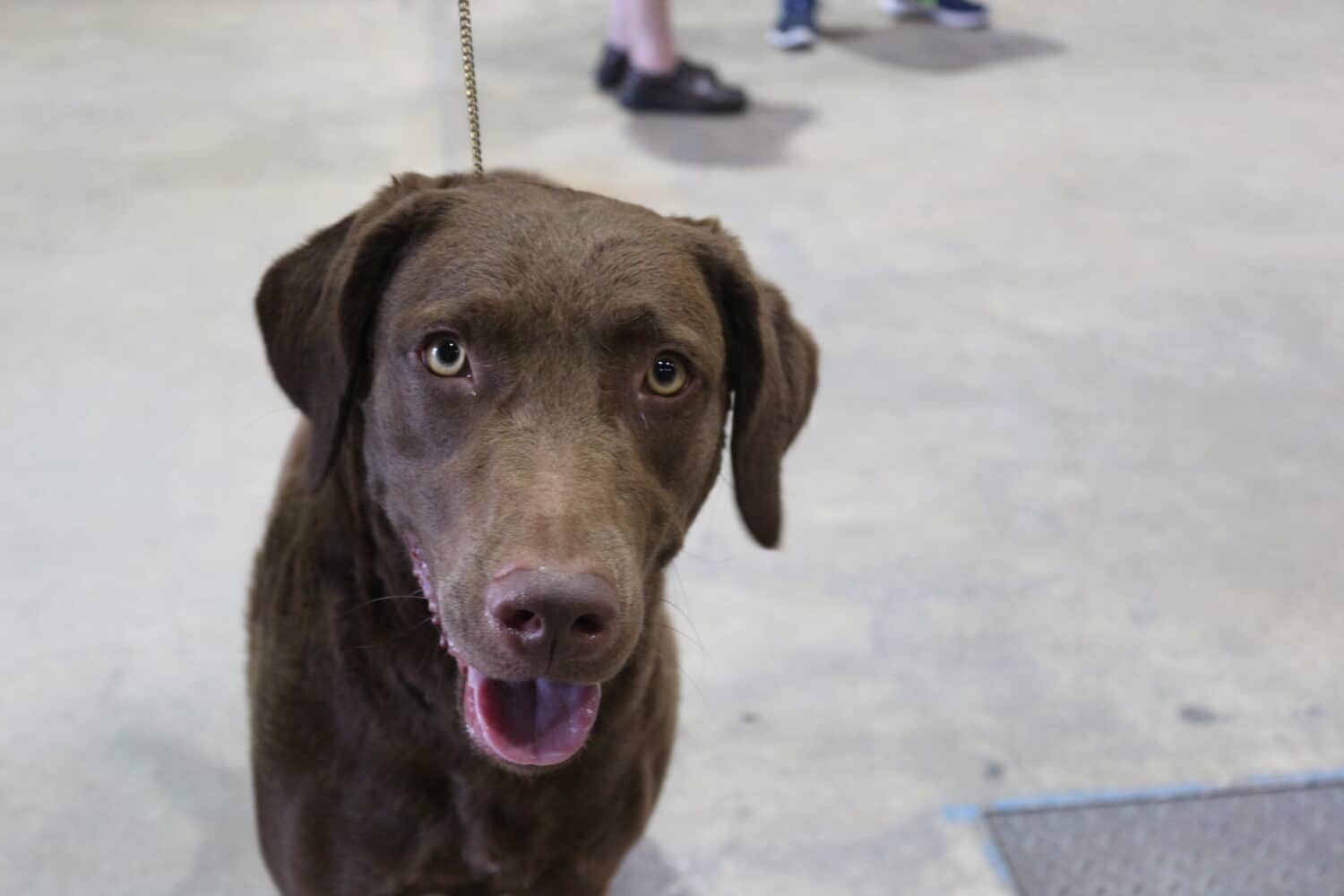
Chessies can be very dark brown in color, but black fur is disqualifying for the breed.
©Life Gemz/Shutterstock.com
There isn’t much to say about dark brown coats in Chessies, as they’re just what they sound like! The dogs have very dark brown coats, sometimes with varying shades throughout the fur.
#8: Brown
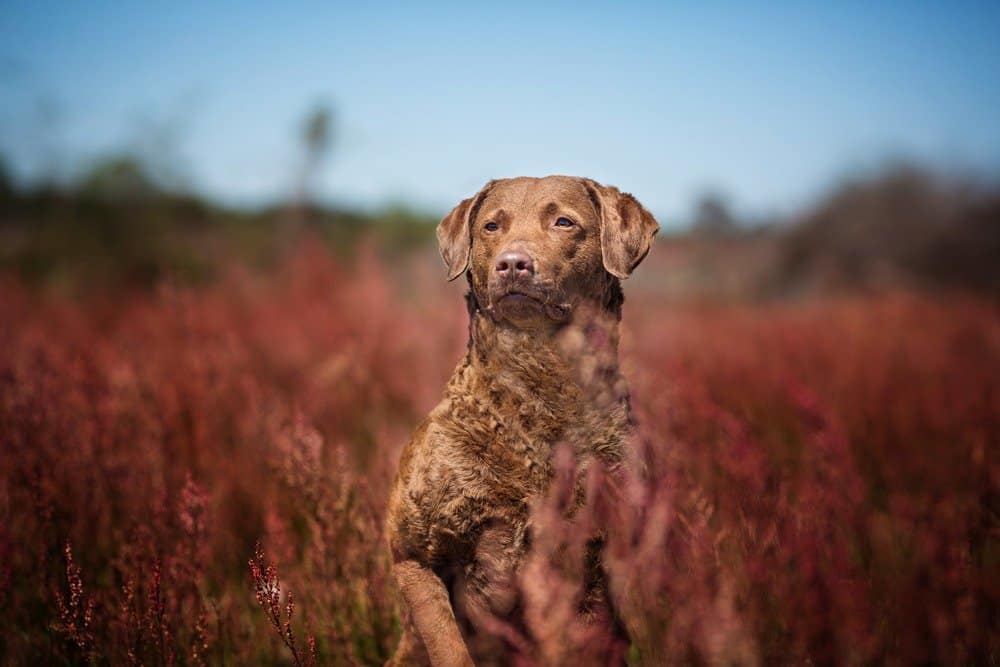
The brown coats we see in Chessies are typically called “chocolate” in other breeds, such as Labradors.
©Kerrie T/Shutterstock.com
Lastly, brown is the most common coat color we see in Chessies. These dogs have deep brown fur, similar to the “chocolate” color seen in other dog breeds.
Other Fun Facts About Chessie Fur
Chesapeake Bay Retrievers have some pretty unique coats! Like Labs and Golden Retrievers, they were bred to hunt waterfowl, so their coats are water-resistent.
Chessies were also bred to withstand very cold temperatures, sometimes diving into icy waters. Their coats are not long, but incredibly dense. When you part their fur, you’re met with a thick undercoat that makes seeing the skin difficult.
They have a unique ripple down their backs as well, with curly fur from the neck to the base of the tail. Wavy fur on the sides of the body disqualifies a Chessie from participating in AKC shows, as the rest of the coat should be straight.
At AKC dog shows, judges will judge a Chessie’s coat according to texture more so than color. This is what impacts the dogs’ working abilities, and keeps them warm and dry!
As you can see, Chessies are beautiful dogs with gorgeous coats. As hunting dogs, they need plenty of activity and training in order to thrive.
Please research any dog breed thoroughly before adoption to ensure you get a dog that’s the right fit for your lifestyle, rather than relying on cuteness or coat color alone!
Thank you for reading! If you have feedback on this post, please contact the AZ Animals editorial team.
The photo featured at the top of this post is © Progressive Ground/Shutterstock.com
Ready to discover the top 10 cutest dog breeds in the entire world?
How about the fastest dogs, the largest dogs and those that are -- quite frankly -- just the kindest dogs on the planet? Each day, AZ Animals sends out lists just like this to our thousands of email subscribers. And the best part? It's FREE. Join today by entering your email below.
Thank you for reading! Have some feedback for us? Contact the AZ Animals editorial team.






